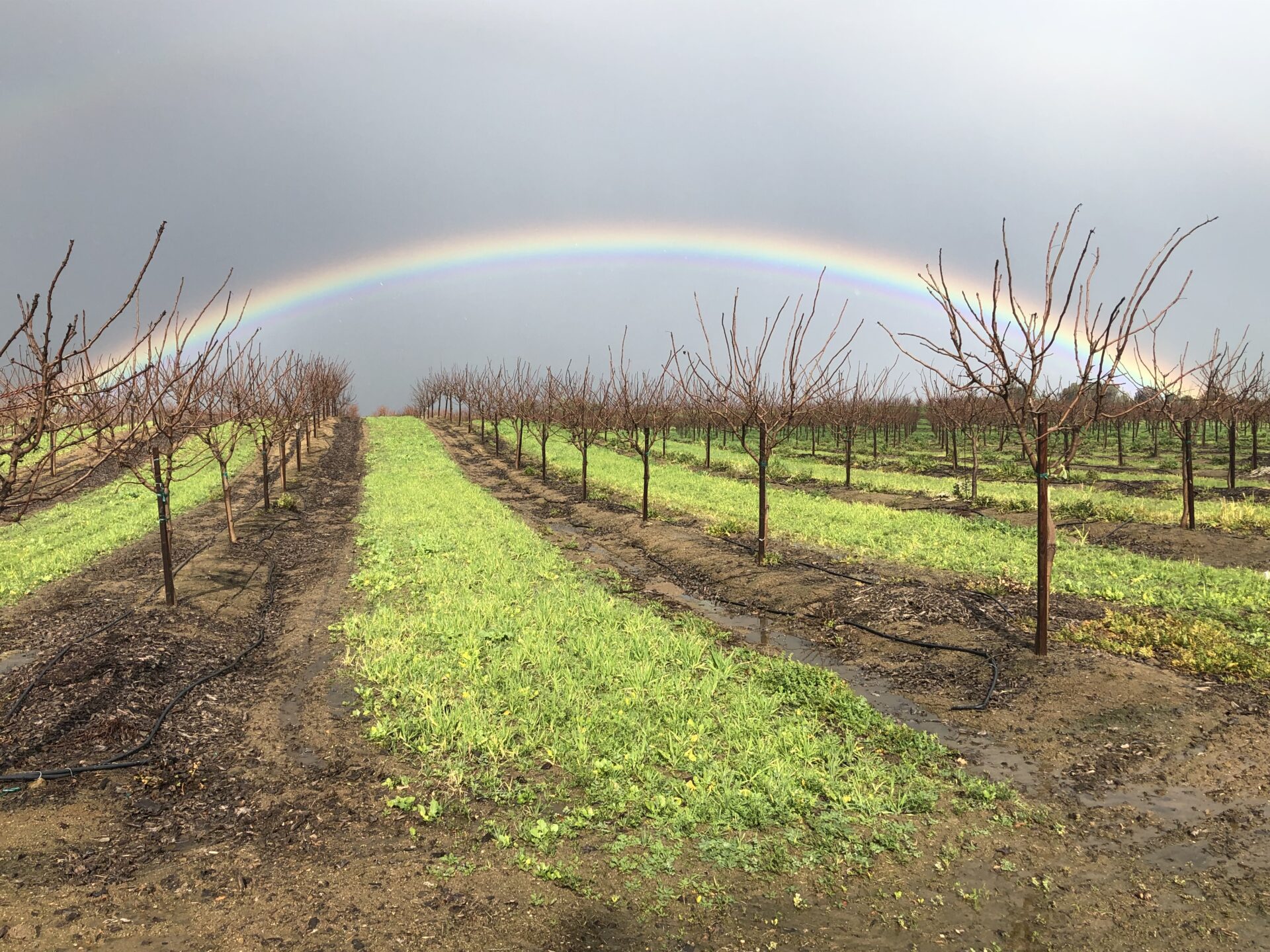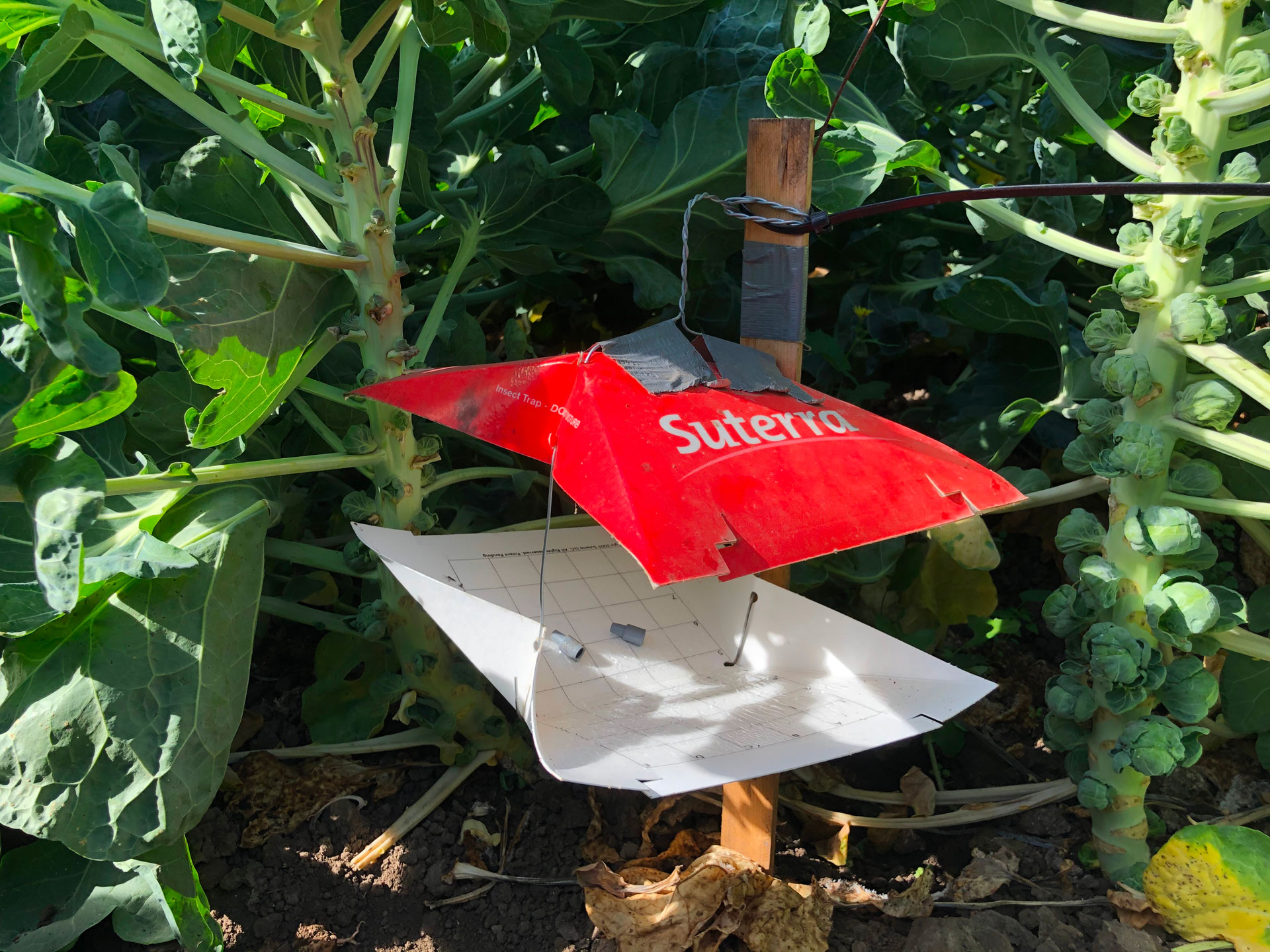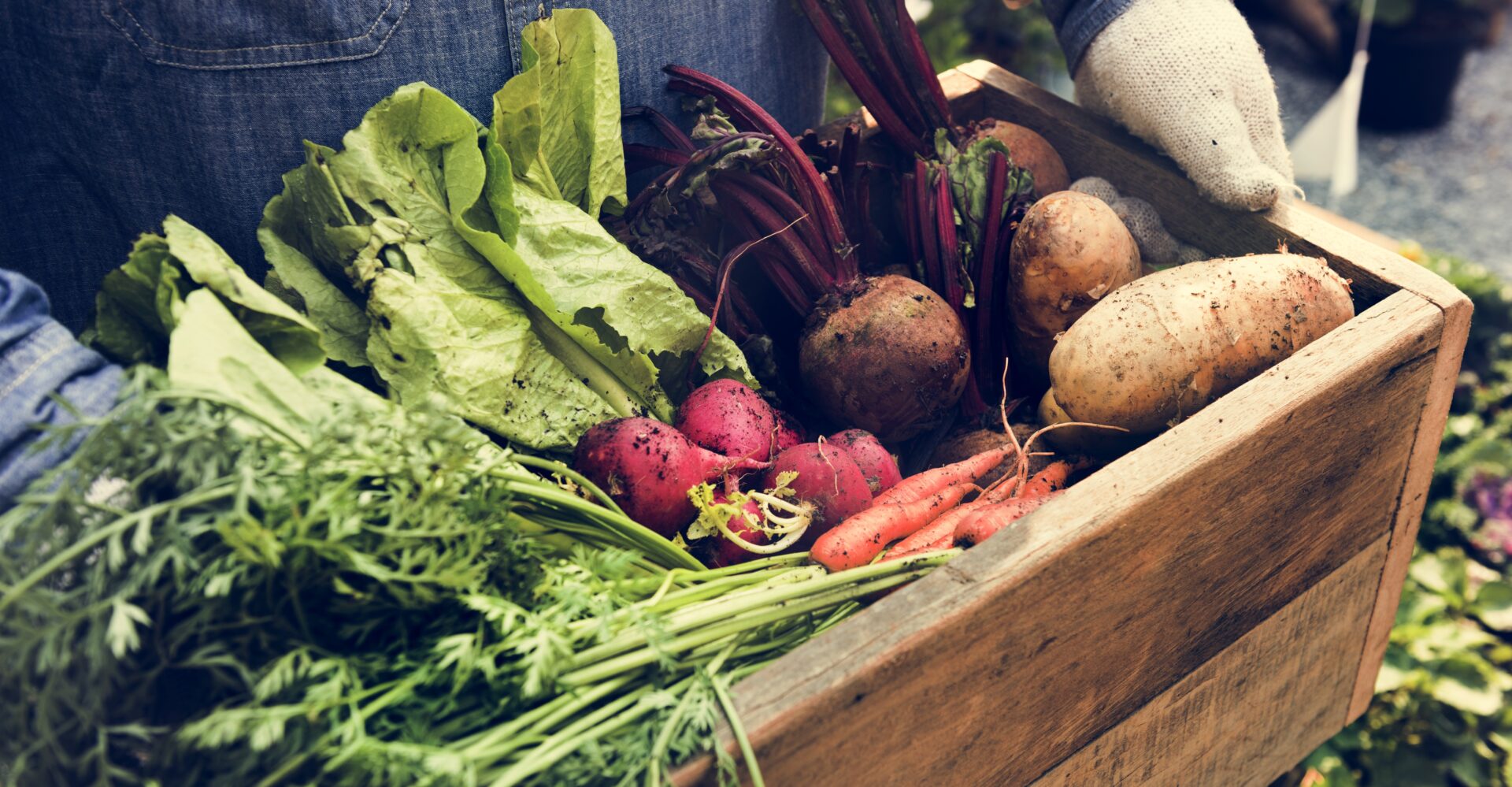
In Part I of Organic Fertility for Trees in the previous issue of Organic Farmer, we focused on considering the soil first. The article was primarily directed toward establishing the proper environment to encourage the greatest response from tree roots and all the biological life that is needed to correctly serve those roots and the trees that will be grown there. This article will consider what would be necessary to build the natural fertility of each different soil and how to determine what is required for the trees and the supporting biology to thrive accordingly.
We have tested soils from over 75 countries and all 50 states here in the U.S. Numerous countries and many different states have provided thousands of samples from the worst to the best soils, with soils from tree crops being one of the greatest sources. Speaking comparatively, very few soils have all the nutrients in sufficient amounts to provide for ideal performance. And even those that do can soon be depleted if not properly cared for to determine and maintain those ideal levels.
Too many assume that once a soil is corrected with the right nutrients it will remain in that condition. Once corrected, it will now be better than it would have been, but as the potential of the soil to produce goes higher, the removal of nutrients needed by the trees to do their best will be used up more quickly (some sandy soils have gone from best to worst in five years or less due to neglecting to maintain even the basic needed nutrients for the best fertility and consequently the best quality and yield.)
With few exceptions, growers will admit that those soils which are found to be closest to the established optimum nutrient needs will grow their best trees. Most of those properties have never been personally visited, but the evaluation is made possible by using the soil testing methods developed and used by Dr. William Albrecht to determine when this is true.
There are always exceptions! A grower who is still an ardent supporter of the program, whose principal crops were almonds and walnuts, sent samples for analysis and fertilizer recommendations. When what should have been the best field was pointed out, he said that in fact it was his very worst field. Despite all the data we had, it was not enough to provide the full picture. Cobalt and molybdenum, which are optional tests due to cost and so often not being considered as a limiting factor, were not requested for analysis on the samples by the grower. In this case, once the soil was analyzed for molybdenum, it was so deficient that it was the only reason this field was not a top performer. Once the molybdenum was supplied, it turned the field from the worst to one of the best.
When what is seen to happen time and again, over and over, in all parts of the world for some reason does not seem to work, there should be a good reason why. It just requires additional effort to find that reason.
Building Fertility
What is needed for any basic fertility program for growing trees? As explained in the previous article, it is using soil chemistry to measure and supply the basic needs of each soil. Once accomplished, that provides a long-term workable solution for maintaining the proper soil structure, or the proper amount of pore space needed for balancing air and water needs of each soil. This in turn helps build and maintain the necessary environment for the needed biological activity for growing the best trees in that soil.
Still, the place to begin must be producing enough of a crop to stay in business. That is best accomplished by providing adequate amounts of four major nutrients (nitrogen, phosphorus, potassium and sulfur) for growing new young trees or producing the next crop. Then for long-term soil fertility and to maintain the proper soil structure, measure and correct the needed levels of calcium and magnesium. After those levels have been determined and any established needs have been met, plan to build the essential micronutrients to reach at least the minimum requirements before emphasizing those that specific tree crops respond to best.
This is the real foundation on which to build soil fertility for growing any type of tree or plant. The only problem is that too often growers just assume they are meeting those requirements with a “hit-and-miss” program. Here is a good gauge to use as an organic grower to evaluate your fertility program. If your land has the proper fertility, then the organically produced crops should yield well above that of the average conventional grower. If it is not, then try to learn why because there is no good reason for any organic program that claims they are growing nutrient-dense foods to lag from the average conventional program. When that happens, the trees are being robbed of specifically needed nutrients that should be and can be supplied naturally.
Some growers use the excuse that conventional growers are forcing the soil and that is why the yields are so much higher. That is a possibility at times when pushing for extremely high yields. However, truly trying to force a soil is when more than is ordinarily required to produce the soil’s true yield potential is applied. That can happen with organic growers, too. It is the overuse of more than the trees show to be needing that causes harm. For example, when the soil is low in some needed nutrient and extra “organic” nitrogen from compost is applied instead of that nutrient to try and squeeze by and get a little more of it from the decomposition of soil humus, that is forcing the ground. When adding the needed nutrients to help the trees achieve their natural yield potential, that is not forcing the crop; rather, that is providing good crop nutrition as what is needed for growing the most nutritious crops. And what determines true crop potential? Correcting the soil to the very basic levels that are required to grow any plants properly suited for that area in terms of climatic conditions.
Inadequate Fertility
In working with organic growers, inadequate fertility is often their greatest limiting factor in terms of both quality and yield. For example, supplying enough nitrogen just to feed the trees what they need is often a big problem. For far too many growers, when they are not able to supply the needed amount of N from legumes, compost and foliar applications, the crop is just allowed to suffer. When a soil analysis shows to have an adequate amount of other needed nutrients, it is often possible to trace the lack of yield for organic fruit or nut trees right back to the insufficient use of nitrogen for the trees.
A good guide to differentiate between a real need and using nitrogen even in an organic program to “force” production is to find out how much is required to produce the proven yield average for each orchard or grove. Adequate use of nitrogen is not the enemy in organic production; rather, it is the excessive use of nitrogen that causes the problems. And so long as it is possible to increase the yield without having to go above average N requirements serves as a good guide for the most conservative approach to nitrogen needs in tree crops. This does not assure maximum performance once the basic needs of the soil have been met. Then, applying what is needed for the average proven yield plus 10% extra over the next three to five years using slow-release N sources will show whether the top potential for that soil has been reached. Sufficient nitrogen is often the most limiting factor for better production on many types of organically grown crops, including all types of organic tree crops.
Growers will often admit that their trees could use more N, but it is the availability of enough material or cost of that extra need that stops the process. Far too many organic growers rely heavily on compost to supply most of the needed nitrogen. When that is the case, one of two things are quite commonly a problem that must be faced. The first is a lack of enough material to supply the needed N, then the crop and the trees suffer from the problems caused by nitrogen deficiency. The second is when there is plenty to use and the assumption is if you need the nitrogen, because it is compost, and you can “never” apply too much, just put on all you can.
Too much certified organic compost is just as bad as too much of anything else. Every time a soil builds up too much of one nutrient, it will reduce the availability of something else. Phosphate and sulfur are two nutrients that can serve as examples of possible unintended consequences to consider on soils growing organic tree crops. Both nutrients are required in sufficient amounts for top performance. Adequate phosphorus results in larger leaves. Adequate sulfur results in larger root systems and growing more wood. But excessive use of phosphate is antagonistic to sulfur uptake (more often seen in the organic fertility programs used in the eastern U.S.) and excessive sulfur applications are antagonistic to phosphate availability (more often seen in the western U.S.)
For example, on soils that barely have enough phosphate, the amount of sulfur in a ton of gypsum can interfere with P uptake. But when large amounts of compost that normally contain very little sulfur are applied until it results in pushing P to excessive levels, that can not only cause problems with zinc deficiency (which then interferes with adequate moisture uptake), but also results in less sulfur uptake, which restricts wood growth. Soils with excellent phosphate levels (500 pounds per acre of P2O5 or 100 to 110 ppm of elemental P) will respond best to excellent sulfur levels. For example, when this level of P is present, then sulfate as expressed in ppm of sulfur should be 50 ppm. This will result in 25% more trunk growth by caliper measurement and up to 1/3 more leaf on young trees. But adding needed sulfur without correcting low phosphate levels can result in reduced leaf size and other related problems caused by P deficiency.
Another related problem that becomes a possibility here is breakage from weak wood due to any combination of potassium, manganese and/or copper deficiency, which increasing limb and leaf growth from adding sulfur can exacerbate. After basic soil fertility requirements have been properly determined and correctly supplied based on reliable guidelines of an accurate soil analysis, consider the special needs for growing trees that set them apart from other crops.
Begin this portion of the program by increasing potassium saturation in the topsoil to 7% to 7.5%, sulfur to 50 to 100 ppm for optimum growth and wood strength, and phosphate to 100 to 150 ppm for larger leaves. Be sure any problems with too little or too much calcium or magnesium receive sufficient attention since those are the two major keys to building and maintaining the correct physical structure of each soil. Next, consider and emphasize the micronutrients that make the most difference for each type of tree. For example, once the minimum levels for all measured nutrients have been achieved, boron would deserve extra attention on olives, sweet cherries, avocados, citrus and macadamias, but even more so on figs, mangoes and pistachios. Consider higher manganese for soils growing walnuts and macadamias, and zinc on pecans. Higher copper levels provide extra resilience so limbs can bend and not break when there is sufficient potassium and manganese. Copper is also necessary for skin to stretch and not crack on the more perishable forms of fruit crops.
To be specific about all of these needs requires a reliable soil test that is based on measured values that are directly applicable to the orchards and groves where the trees are growing. Generalities about what trees need for a particular yield or trying to guess what the plant needs to grow each crop will not solve specific problems or top-level requirements that relate directly to the needs of each tree crop from soil to soil. For long-term solutions, first use a soil analysis that can accurately determine what is already there. Next find a consultant that can explain the levels and which are giving positive and negative results. Then, consider an effective building program by supplying what nutrients are most limiting.
Growing Young Trees
Where possible, for tree and vine crops, start building the fertility at least three years before planting. Some growers adopt the erroneous philosophy that so much has been spent to get the trees in the ground that no more should be spent on fertility until the trees begin producing a crop. The exact opposite is true. The more fertile the soil when the trees begin bearing, the greater the health and production of the trees. It requires up to three years to acquire the best results from certain materials the trees need. Liming materials and several micronutrients are in that category.
Correcting the nutrient needs for each soil is not usually accomplished in a year or so. How many years have needed nutrients been removed by crops without being properly measured and replaced? Results from adding some missing elements in needed amounts all at once can cause a problem rather than help the trees. Even when it is possible, the cost to try and do everything at once can be prohibitive. It can take years to re-build soils for peak performance in terms of efficiency and yield. Yet those who persist at building and maintaining specific fertility requirements for each different soil will have a solid foundation on which to build healthier and more productive trees.
Soil compaction can be a serious limitation in such cases. Soil fertility needs can be measured and supplied, but keep in mind that correcting soils via proper nutrient applications can only give the best results when there are no limitations from compaction.
Compaction problems and what to do about them are extremely important for tree crops, and the same major issues and principles apply for growing all types of crops. The problems caused by soil compaction and how to deal with them requires an entire article or more to consider and explain. Keep in mind that even for solving soil compaction problems, supplying the correct nutrients needed for good structure in that soil is a preliminary and basic requirement.
Start tree crops on the soils with the most optimum fertility possible to optimize the health of the trees and maximize production for whatever those trees are selected to provide. Optimum fertility is when each soil has what it needs to grow the crop and provide the environment to allow the proper amount of air and water (needed soil porosity) to best encourage the plant roots and all the biological activity that serves to provide the trees what they need for doing their best. When the fertility is correctly provided (the right organically added soil nutrients, which constitutes using true soil chemistry), only then will the ideal pore space for needed air and water be present (the soil’s natural physical structure), which then provides the biological life that is present for the environment they need to thrive, not just struggle to survive.
Neal Kinsey is owner and President of Kinsey Agricultural Services, a consulting firm that specializes in restoring and maintaining balanced soil fertility for attaining excellent yields while growing highly nutritious food and feed crops on the land. Call (573) 683-3880 or see www.kinseyag.com for more information.





